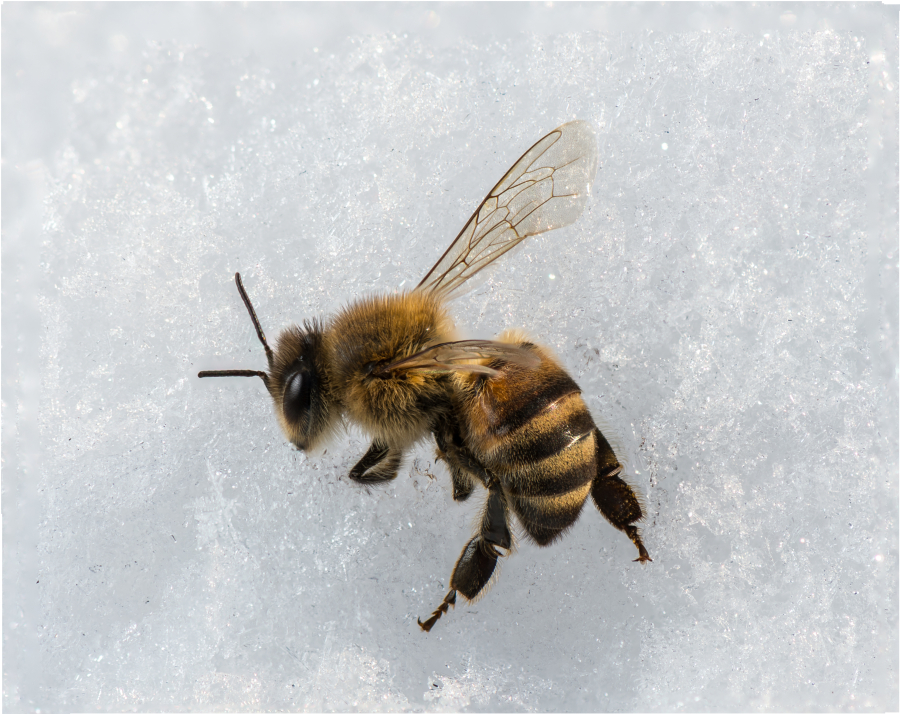EUGENE, Ore. — Seven hives’ worth of honey bees at Oak Hill School in Eugene died this winter.
When the group of 16 second-grade students who tend to the normally buzzing insects found out that their beloved bugs had passed, they were devastated.
“Usually the kids come down here with their beekeeper suits on and open the boxes, see that the bees are alive and vibrant, and everyone jumps up and down and does a little dance,” said James Luzzi, the school’s naturalist. “But this year we opened it and they were all dead, and the kids were really bummed. It makes you feel rotten, you know? Like what could I have done differently?”
Local beekeepers and experts said the cold temperatures and heavy snowfall, coupled with prolonged damp conditions in December and January, played a role in the demise of entire beehives across the Willamette Valley.
In the case of the Oak Hill honey bees, Luzzi said the weather probably was between 50 and 70 percent of the problem. His estimate is based on years of studying ecology and the natural world. He has a bachelor of arts in philosophy and a bachelor of science degree in public policy and philosophy from the University of Oregon and also served as a graduate research fellow at the Institute for Sustainable Environment at the UO.
“It could have been the really cold, wet weather, but I think a combination of factors played a role,” he said.
Luzzi, 63, said everyday pesticides and chemicals used in people’s backyards severely affect honey bees as well as a lack of forage for the bees to find pollen and nectar for sustenance. But Luzzi said the bees had plenty of food (honey) stored in each of the seven hives, five of which successfully survived the prior winter.
“We’re assuming the weather was part of it, but healthy hives should be able to manage that,” Luzzi said. “Pesticides, herbicides, viruses, mite problems, all of that leads up to a perfect storm, and it just hit us hard. It wasn’t just the cold temperatures; the hives were just weaker than they should have been.”
In an effort to help replenish the school’s bee farm, the second-grade class, which tends to the bees each year, held a sale of homemade jewelry and baked goods Wednesday to raise money to buy new bees.
“So many of our bees died, and we were pretty sad,” said Madison Becker, 7. “So we want to raise enough money to get new hives.”
On a stormy February day, tiny droplets of sideways rain fell from low-hanging clouds as about 30 parents, teachers, administrators and other students gathered outside the school and set up long, foldable tables. Homemade frosted cupcakes, crispy rice treats, cookies, pipe-cleaner bracelets and other hand-made crafts were arranged atop them.
“My favorite part about the bees is that they give us food,” said Maddie Moore, 7. “I really like the honey, too.”
The private K-12 school is situated on 72 acres next to Lane Community College off 30th Avenue in South Eugene. About 200 students attend the school.
Each year a new group of second-grade students are in charge of tending to the bees. They harvest the honey, feed the bees, learn about what it takes to be a beekeeper and the differences between backyard beekeeping and commercial beekeeping.
Luzzi, who first began working at the school doing part-time landscaping about 12 years ago, helps each grade complete science and environmental projects.
Although Oak Hill students were disheartened by the mass death of their beloved bees, bee experts said the demise of entire hives is not abnormal, or new.
Ken Ograin, a beekeeper and member of the Lane County Beekeepers Association, said Wednesday that he loses at least 25 percent of his beehives every winter. He has five hives in his backyard in Elmira, and said he’s already lost two.
“They were fine this fall, but we lost two in late November and early December, probably partially because of the cold,” he said. “In the middle of December, I peeked in on them, and there were three hives that had active bees in there.”
Bees can’t fly when the outside temperature dips below 55 degrees, Ograin said.
Ograin said entire hives have been dying off since 1987, when the varroa mite was introduced into the U.S.
Ograin said varroa mites are parasites found anywhere that honey bees are present. They are one of the most serious threats to western honey bee colonies and one of the primary causes of honey bee decline.
The mites attack honey bee colonies and feed on the bee’s hemoglyph, or bee blood. When the mites attack the bees, they spread diseases, viruses and weaken the bee’s immune system, making them more susceptible to factors outside of the hive that can affect them such as pesticides, pollution, high or low temperatures.
Ramesh Sagili, an assistant apiculture professor at Oregon State University, said varroa mites have been “a bit challenging to control this year.”
“A honey bee colony that did not receive a mite control treatment at appropriate time has a high probability of collapsing,” Sagili said.



